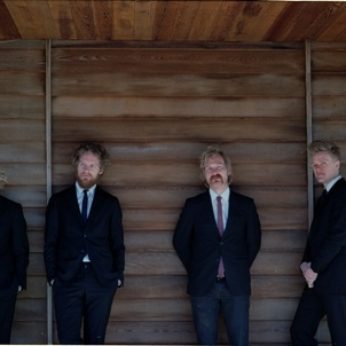Composer: Ludwig van Beethoven (b. 1770 - d. 1827)
Performance date: 29/06/2014
Venue: Bantry Library
Composition Year: 1825
Duration: 00:45:48
Recording Engineer: Richard McCullough, RTE
Instrumentation: 2vn, va, vc
Instrumentation Category:String Quartet
Artists:
Danish Quartet (Frederik Øland, Rune Sorensen [violins], Asbjørn Nørgaard [viola], Fredrik Sjölin [cello]) -
[quartet]

Glimmers and nothing
more..the rest is chaos was
Tchaikovsky’s opinion of Beethoven’s late quartets, a pronouncement that gives
us some idea of just how far ahead of his time Beethoven was. However this
quartet was well received at its first performances in September 1825 in
Beethoven’s presence in the back room of a tavern in
the rights. The key to understanding this extraordinary quartet is to know that
Beethoven fell seriously ill while writing it and on his recovery he wrote the
unsurpassed Adagio, which he originally entitled: Hymn of thanks from a sick man to God on his recovery – feeling of new
strength and reawakened feeling. On a more mundane level he wrote a
four-part canon for his doctor on the little ditty, Doktor sperrt das Tor dem Tod {Doctor bars the door to Death].
The very first bar
conjures up that special world of the late quartets that, pace Tchaikovsky, makes some sense of the chaos. The work begins
with an eight bar introduction in slow, sustained half notes. A violin flourish
leads into the Allegro, whose first subject seems to undergo continuous
development, while the beautiful second theme merely undergoes a continual
exposition, which changes only in key and instrumental layout. The movement,
which fluctuates between passion and tenderness, closes with some stunning
bravura in the first violin.
The scherzo is full
of Beethoven’s curious sense of humour. He goes back to an old practice of
Haydn in his minuets, the use of canon. Beethoven’s Scherzo is not actually
canonic, but the parts delightfully imitate one another in sham canonic style,
often at ludicrous distances – the cello below its bass staff, the violin above
its treble staff. Enclosed within this curious frame is the captivating Trio,
again borrowing from Haydn using the form of a musette to aspire to a
country-dance complete with bagpipes and peasant dancing. But Beethoven somehow
manages to combine the celestial with the earthly to create a country-dance
like no other.
The slow movement –
perhaps the greatest slow movement ever written – opens the gates to another
world. The three chorales, the hymns of thanks, are separated by the two
andantes, feeling new strength. The fresh cleansing D major strength of the
latter is unmistakable. The movement gathers intensity as it progresses, the
chorale can be played very slowly as each long-breathed phrase seems to open up
visions inconceivable a few moments before. The final return of this section is
marked Mit innigster Emfindung [with most
fervent feeling] and all words are superfluous.
From this spiritual
summit it must have been hard to decide where to go. The short march that
follows is without complication, a very human relief for players and audience.
This leads into a vigorous recitative passage that deliberately recalls the
instrumental recitative that precedes the Ode
to Joy, ‘deliberately’ for the
main theme of the final Allegro was an early draft for the finale of the Ninth
Symphony – one of Beethoven’s in-jokes that modern scholarship allows us to share. For this last movement Beethoven returns to
the traditional rondo form rarely used in his last works, full of energy and
drive as if to indicate his complete return to health. For the ending, the
tempo accelerates to presto, the key changes to A major and the work concludes
in triumphant affirmation.
Copyright © 2025 West Cork Music. All rights reserved.
Designed and developed by Matrix Internet